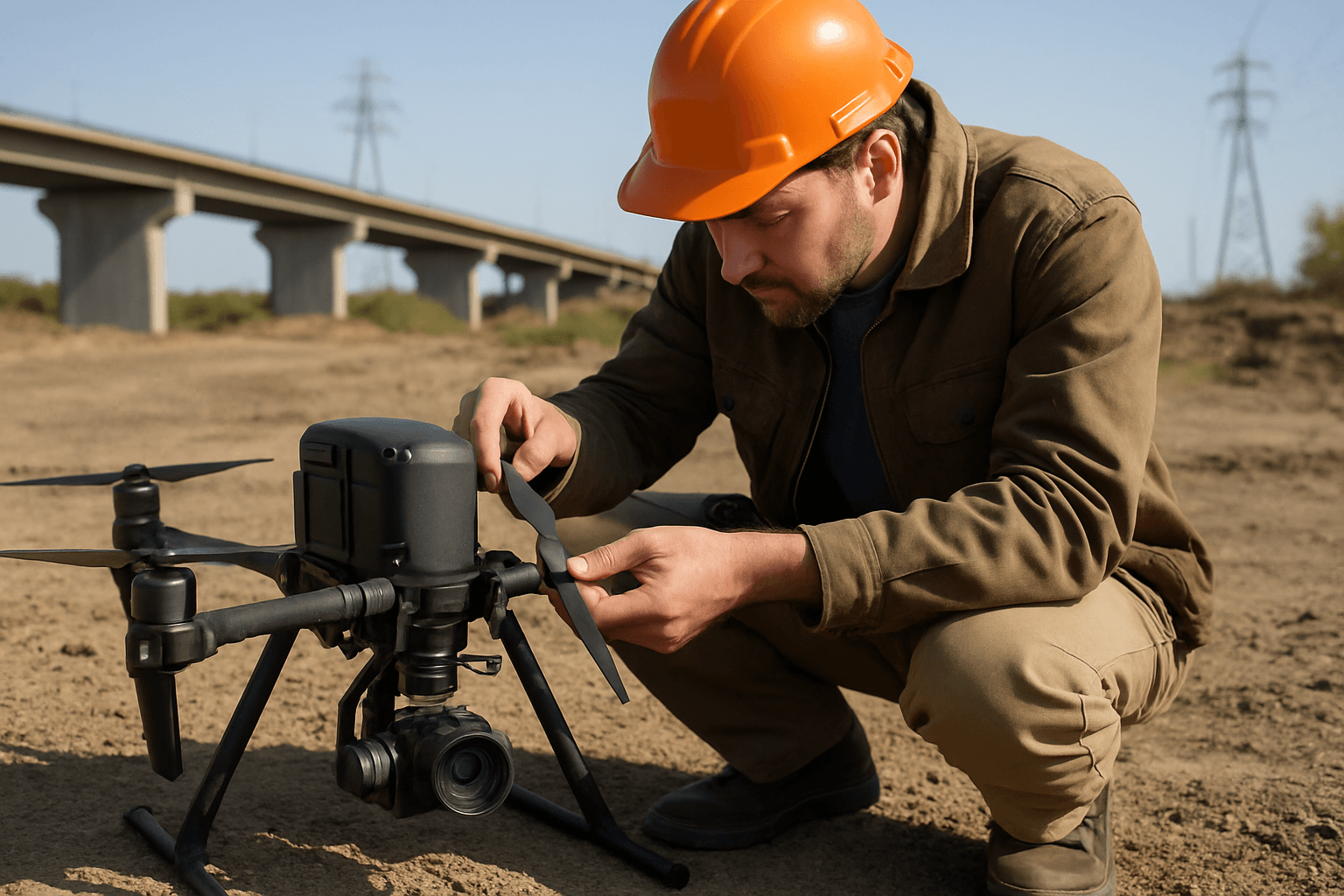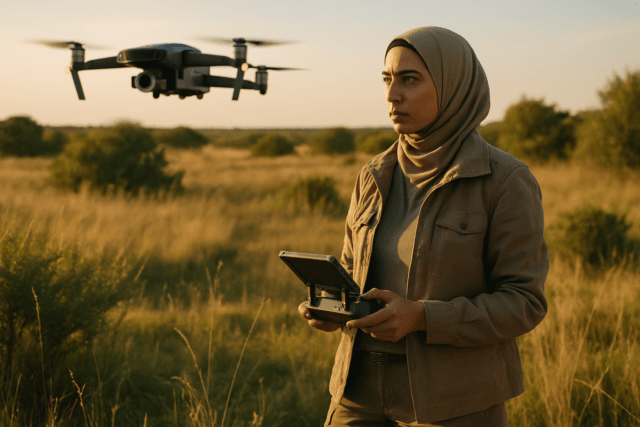Drones have rapidly evolved from novel gadgets to indispensable tools across various industries. Their ability to perform tasks more efficiently, safely, and accurately than traditional methods translates into significant cost savings for businesses. This article explores the diverse ways drones are driving down expenses and boosting bottom lines across different sectors.
Streamlining Operations and Slashing Labor Costs
One of the most significant ways drones contribute to cost savings is by streamlining operations and reducing the need for manual labor. Drones can automate tasks that previously required extensive manpower, leading to considerable reductions in labor costs.
- Automated Data Collection: Drones equipped with self-guided flight paths, data analytics, and high-precision cameras can drastically reduce the time required for data collection. For instance, a 12-acre survey job that would typically take 100 hours to complete manually can be accomplished by a drone in approximately 2 hours.
- Reduced Downtime: In industries such as aviation, drone inspections can significantly reduce downtime. By swiftly identifying issues like lightning strikes, drones allow airlines to convert waiting time into flying time and enable maintenance, repair, and overhaul (MRO) providers to expedite hangar input, leading to substantial cost savings.
- Efficient Inspections: Drones can perform inspections up to 90% faster than traditional methods. Inspecting a 300-foot-tall wind turbine, which would normally take an entire day, can be completed in under an hour with a drone.
Enhancing Safety and Minimising Risks
Safety is a paramount concern for businesses, and drones offer a means to perform tasks in a safer, more cost-efficient manner. By minimising human exposure to hazardous environments, drones help reduce the risk of accidents and injuries, leading to lower insurance premiums and workers’ compensation costs.
- Safer Inspections at Height: Traditional inspection methods for high-rise buildings, such as scaffolding, cherry pickers, and rope access, involve workers operating at height, posing safety risks and requiring extensive safety equipment and insurance policies. Drones can quickly reach the top of buildings and conduct inspections from various angles, capturing high-definition images and videos without putting workers in harm’s way.
- Reduced Risk in Agriculture: In agriculture, drones can be equipped with water, pesticides, or herbicides, enabling farmers to release payloads on specific areas from a safe distance. This prevents worker fatigue and overexertion while saving time and resources.
- Improved Disaster Relief: Drones are a safer alternative for delivering materials in disaster relief efforts, especially when weather conditions prevent airplanes or helicopters from traveling. They can deliver medical supplies and kits to people in desperate situations, saving lives without risking personnel.
Minimising Equipment Costs and Maximising Resource Allocation
Drones can significantly reduce or eliminate the need for expensive equipment such as cranes, scaffolding, and heavy machinery. This not only lowers equipment costs but also reduces associated labor and traffic control expenses.
- Cost-Effective Inspections: Companies using drones for inspections can save between 30% and 50% compared to traditional methods. For example, a bridge inspection that might cost £8,000 traditionally could be completed for as little as £4,000 with a drone.
- Reduced Equipment Rentals: Drones eliminate the need for costly crane rentals, which can range from £800 to £1,600 per day, along with the added expenses of labor and traffic control.
- Real-Time Resource Management: Drones enable real-time tracking of materials, monitoring of equipment, and assessment of inventory, leading to more accurate resource allocation and reduced wastage in construction projects.
Optimising Data Collection and Analysis
Drones equipped with advanced sensors and cameras can collect precise and high-quality data for various applications. This data can be used to improve decision-making, optimise resource allocation, and enhance overall efficiency.
- Efficient Land Surveying: Drones can capture detailed topographical data, including elevation, drainage spots, and potential obstructions, in a fraction of the time and with less manpower compared to traditional land surveying methods. Construction drone photos provide ultra-high-definition quality, revealing crucial information and saving time and money.
- Precision Agriculture: Drones equipped with multispectral cameras can survey vast areas of farmland, providing data on crop health, irrigation needs, and pest management. This enables farmers to reduce chemical usage by up to 40% and increase yields by up to 20%.
- Environmental Monitoring: Drones reduce costs for environmental surveys by 30% to 50% and allow for faster data collection on ecosystems, wildlife populations, and habitat changes without disrupting the environment.
Industry-Specific Cost-Saving Applications
The cost-saving benefits of drones extend across various industries, with each sector finding unique ways to leverage this technology to improve efficiency and reduce expenses.
Construction
- Reduced Project Monitoring Costs: Drones can reduce project monitoring costs by up to 55%, enabling faster progress tracking and immediate adjustments.
- Accurate Estimates: Construction drone photography captures aerial shots for estimates, maps out land, and provides high-quality photos for reference. Drones also capture measurements effectively, reducing human error and ensuring more accurate estimates for profitable jobs.
- Client Engagement: Drone technology enables quick and accurate connection of beneficiaries to job sites, saving time, avoiding future issues, and securing repeat clients. Providing near-real-time data or opening a digital twin builds trust and fosters stronger client relationships.
Agriculture
- Optimised Field Application: Automating battery and payload management for drones could lead to a 90% reduction in field application costs, eliminating the need for farmers to spend hours driving spraying and spreading equipment.
- Reduced Operational Costs: Using drones to apply pesticides, fungicides, and fertilizers in coffee farming can reduce operational costs by 70% compared to manual spraying and 50% compared to tractor spraying.
- Efficient Crop Health Reports: Drones can deliver crop health reports, providing farmers with crucial information about crop conditions, such as whether they are flooded or too dry. This increases efficiency and supports informed decision-making.
Infrastructure and Utilities
- Faster Pipeline and Bridge Inspections: Drones facilitate pipeline and bridge inspections with cost reductions of 25% to 30% while ensuring compliance with safety and environmental standards.
- Efficient Power Line Inspections: A single drone can inspect 15 to 20 miles of power lines per day, compared to just 1 to 2 miles with traditional ground-based crews.
- Zero Downtime: Drones do not require shutting down infrastructure during inspections, preventing operational interruptions and saving companies thousands to millions of pounds in avoided downtime.
Delivery and Logistics
- Reduced Delivery Costs: Depot-based drone delivery can lead to up to 60% cost savings compared to truck-only delivery when servicing low demand in small areas.
- Efficient Last-Mile Delivery: Drones offer greater efficiency, speed, higher automation, and more direct point-to-point deliveries due to their ability to navigate low-altitude airspace, making them ideal for last-mile delivery.
- Vaccine Delivery: Drones can increase access to vaccines in areas that are not connected by road infrastructure, providing a cost-effective solution for emergency shipments.
Marketing and Business Development
Drones also offer cost-effective marketing opportunities, providing high-quality content for businesses to showcase their work and attract new clients.
- High-Quality Marketing Content: Drones provide high-quality marketing content at a modest cost, capturing aerial shots of construction sites and surrounding areas in 4K ultra HD quality.
- Dynamic Visuals: The maneuverability of drones creates dynamic photographs and videos that a person on the ground cannot easily replicate, enhancing marketing, recruitment, and public relations campaigns.
- Real Estate Marketing: Real estate professionals use drones to capture stunning aerial photos and videos of properties, providing clients with a better perspective and increasing the likelihood of sales.
Conclusion
Drones are transforming the way businesses operate, offering significant cost savings across diverse industries. By streamlining operations, enhancing safety, minimising equipment costs, optimising data collection, and providing cost-effective marketing opportunities, drones are helping companies improve their bottom line and stay ahead in today’s competitive landscape. As drone technology continues to evolve, its potential for cost reduction and efficiency gains will only continue to grow, making it an indispensable tool for businesses seeking to optimise their operations and maximise their profitability.





